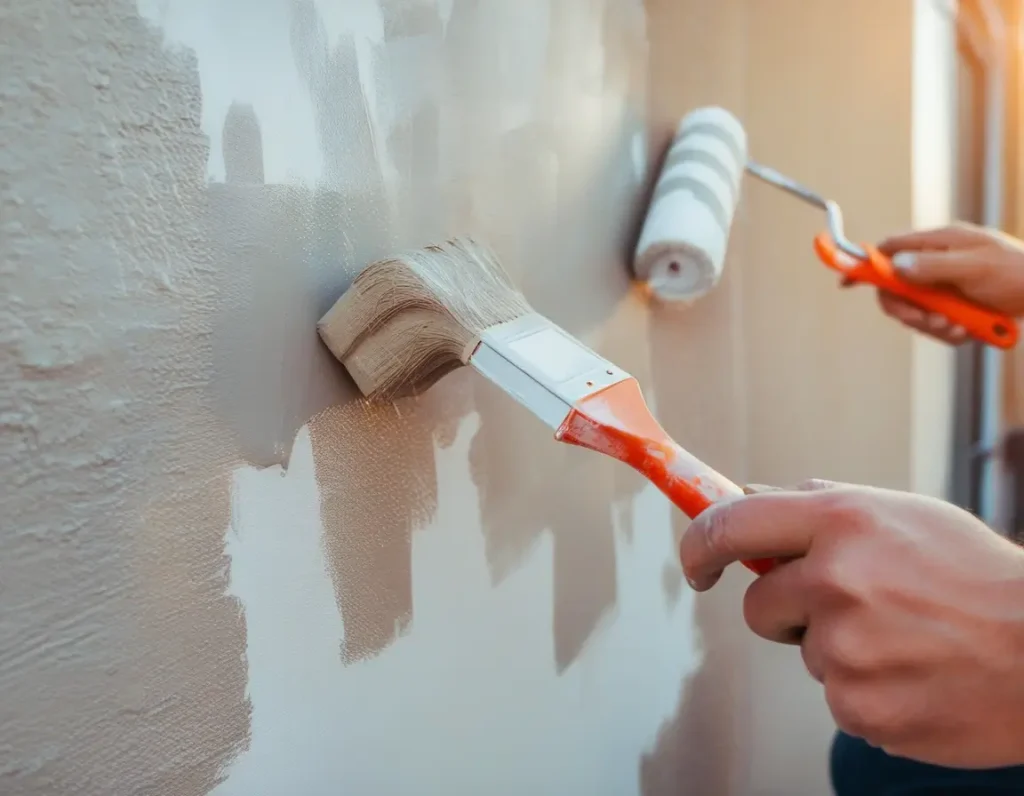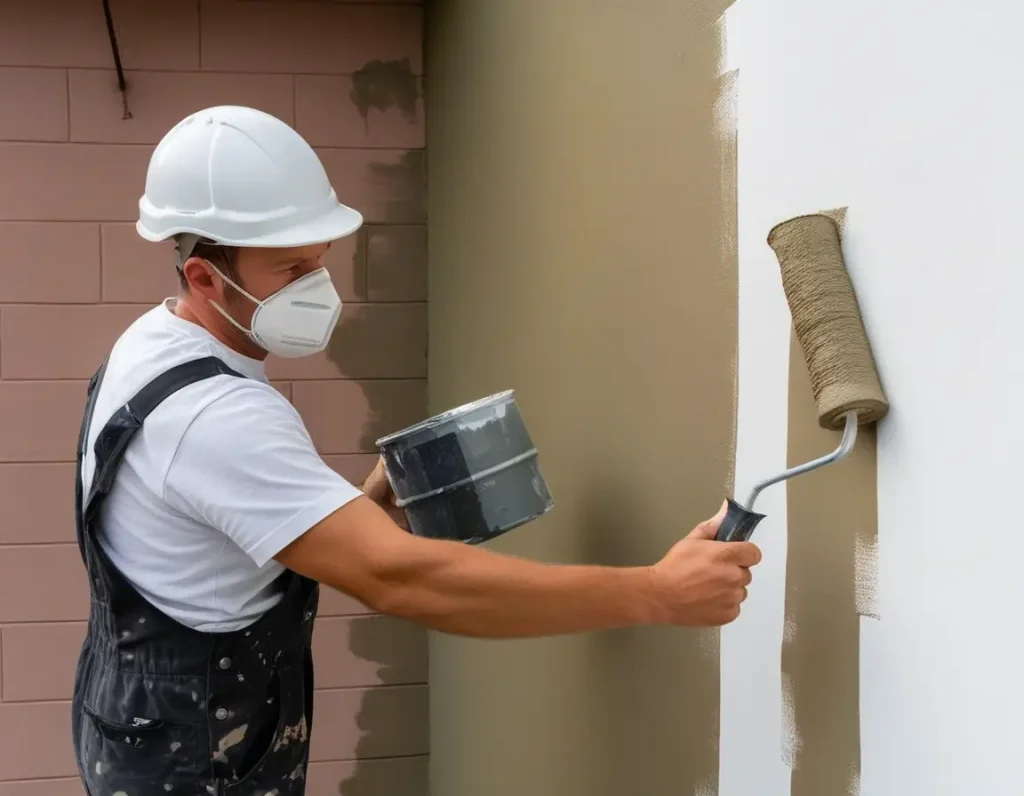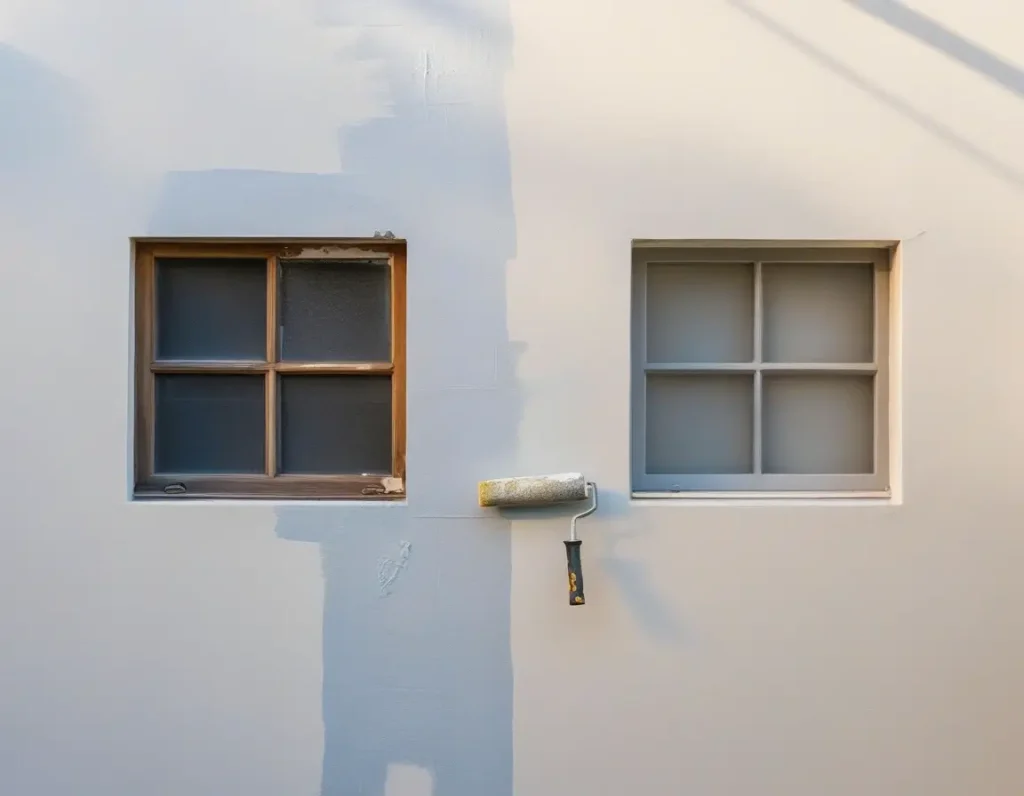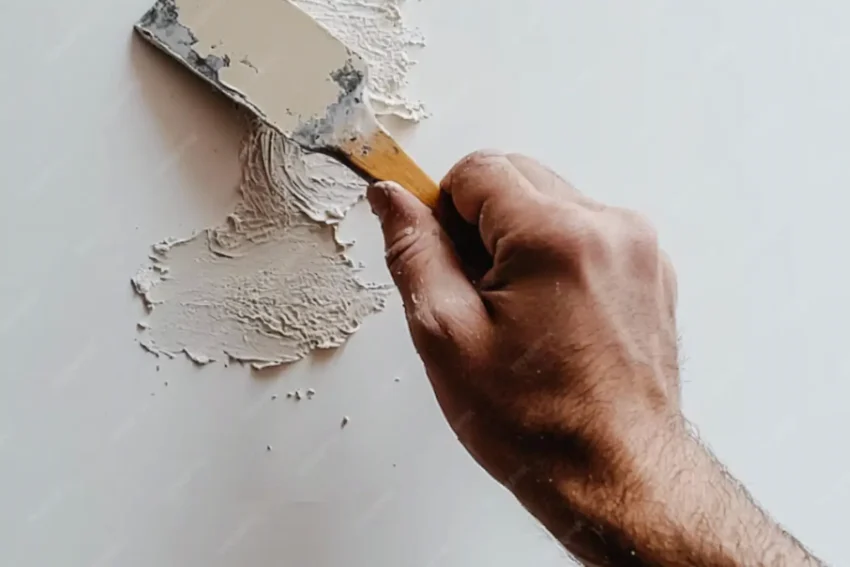Table of Contents
Be it interior painting or exterior, painting can be the magic that rejuvenates your home. Whether you want a bright or cheery aesthetic or something old-fashioned yet elegant, the result depends not only on the quality of the paint but also on that one step: surface preparation. We will discuss how the preparation of the walls before exterior painting is no less important than the decision to choose the perfect colour from the shade card.
Why Surface Preparation Matters for Exterior Painting
Before you get ready to paint the exterior of your home, you should understand why surface preparation is an important element of the painting process itself. The condition of your walls can seriously influence the adhesion of paint, its finish, and even long-term durability. An ill-prepared surface causes cracks, peeling, or bubbling sooner than you might expect, and results in repainting and more additional costs than your painting cost calculator estimate.
Here’s a deep dive into why surface preparation is a game changer and sets your painting project up for success.
1. Ensures Adhesion

The foundation of a lasting paint job is how well the paint adheres to the wall. Think about painting over dirt, grease, or even mould. Your paint can mask all these imperfections at first, but as the surface below it deteriorates and loses its hold on the paint. That’s why we always prep walls before painting the interior or exterior.
In surface preparation for painting, start with cleaning the surface, scraping off the old paint, sanding and then applying primers where possible. A well-prepared wall provides a smooth, even surface that is necessary for the paint to bond right, thereby preventing flaking or peeling in the long run.
2. Prevents Moisture Damage

Moisture is one of the worst enemies of exterior home painting. It can leak in through small cracks or chips where the surface hasn’t been properly prepared prior to painting. Moisture seeps down into the very underlayments beneath the paint, weakening this system as well. From water damage, mildew and mould issues can easily arise, especially during humid climates. Cleaning and repairing walls and cracks before painting effectively puts a good layer of protection over the surfaces so that water cannot penetrate them.
If you are using a painting cost calculator, consider that wall preparation will certainly add to your upfront costs, this will help you save money in the long run because it prevents damage repairs that will cost you more money to repair.
3. Smoothes Out Imperfections for a Flawless Finish

A perfectly executed exterior painting project isn’t exactly about the big picture. While more significant imperfections- cracks, holes, or rough patches-may appear to be minor, a coat of paint over them makes them an eyesore. Surface preparation is actually filling in these small imperfections, smoothing out uneven surfaces, so that the finally painted-over surface will be clear and smooth.
A smooth surface also adds to your wall painting ideas. Whether you choose neutral tones or bold contrasting hues for your bedroom painting ideas, a well-prepared wall ensures the colour combination ideas you settle on, look their best and won’t be ruined by the flaws on the surface.
4. Prolongs the Lifespan of Your Paint Job

When you take the time to prepare your walls before painting, you are investing in the longevity of the paint job. Exterior painting is an investment for your home, and it only makes sense to want that investment to last as long as possible. Good surface preparation not only makes your home look good but also protects it from external factors such as sun, wind, and rain. Quality prep plus quality paint can make walls last for many years in comparison to quick jobs applied without proper preparation.
5. Extends the lifetime of paint in severe weather conditions

In areas that generally experience extreme weather conditions intense sun, continuous heavy rain, or freezing winters, the overall durability of the paint is put to the test through time. If all necessary preparations like sealant or primer have been done on the walls before painting, it will sustain all the potential effects of those harsh weather conditions and wear away or crack less.
How to Prep Walls for Exterior Painting
Well, now that we’ve established the importance of paint surface preparation, let’s walk through the essential steps involved in prepping walls for exterior painting:
1. Inspect the Surface
Start by inspecting the exterior of your home. Look for any cracks, peeling paint, mould, or mildew. Note any damage that you will address during this prepping phase.
2. Clean the Surface
Cleaning is the first process in preparation for painting. Dirt, mildew, and old paint must be removed. That way, new paint binds well. The pressure washer also helps to remove years of grime and mildew from the surface.
3. Scrape and Sand
Sanding is necessary be it fresh painting or repainting. But first, the paint surface must be cleaned by a solvent. Remove loose, peeling paint. Sand the surface by removing rough places for uniform adhesion of new paint.
4. Fix Cracks and Imperfections
Use an appropriate filler to fill in the cracks, holes, etc. Use sandpaper once the repairs are dry and make them smooth to paint on.
5. Apply Primer
Probably one of the most important elements of preparing a surface for painting, especially if it’s porous or has never been painted before. A primer creates an even surface for a topcoat to adhere to and can even add depth to the colour, allowing your choice of colour combinations to become a beautiful visual delight.
Use Tools like Colour Visualiser Tool and Shade Card
Although surface preparation will keep the paint in good condition for a much longer time, the right choice of colour also brings an added priceless value to your home’s aesthetic look. If you’re confused about how some colours will look, a colour visualizer tool can help you preview how different shades would work on your walls before any decision-making. You can go through the shade card to compare different tones, style, and combination that would enhance your space.
Conclusion
Irrespective of interior or exterior painting, surface preparation is that unsung hero which leads to a successful paint job. Proper surface preparation ensures stronger adherence, protection against moisture, smoothness of imperfection marks, and ultimately gives an extended lifespan to your paint. Prep work on walls will add not just a layer to the new coat of paint but to the duration, beauty, and value of your home.
